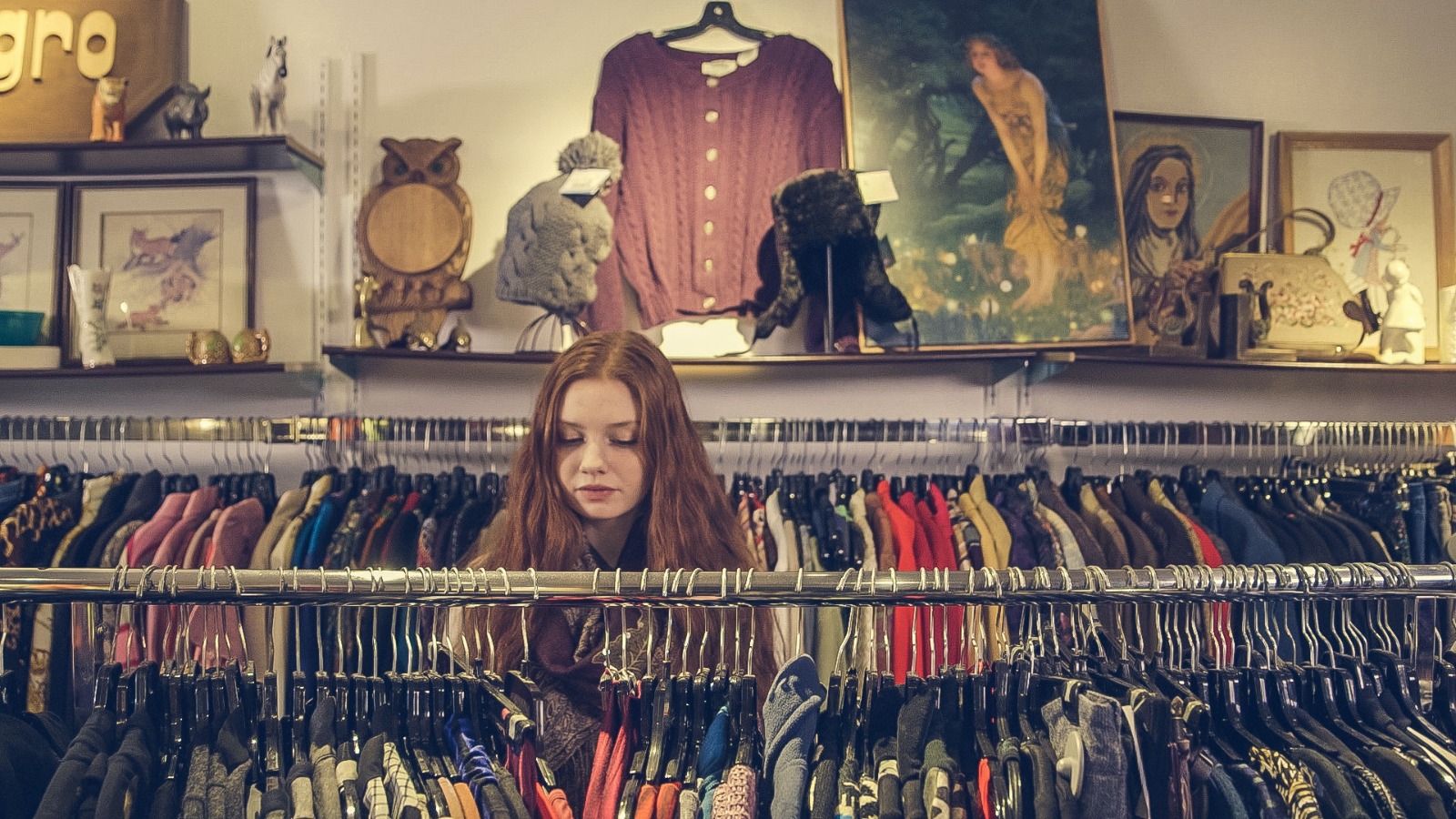When Will Second Hand Clothing become the New Norm?

A while ago I was watching some videos on YouTube. I somehow ended up looking at a Dutch vlogger/influencer showing her daily life which included a lot, but mainly clothes. There were at least three whole closets of clothing and in addition a huge collection of shoes. After showing her immense closet she also showed her new pieces of clothing that she bought for her new vacation. And surprisingly she found it very difficult to find a suitable outfit.
Funny enough, there is a reason for this, which is the paradox of choice. This means that the more options you have, the harder it is to make a good choice. Additionally there is also a big chance that you are less satisfied with your choice. When you have a lot of other options available, it becomes easy to imagine that there are other attractive options you could have chosen. So in that sense, her reaction is quite understandable.
However, this makes me question the purpose of clothing and to what extent we actually need so much clothes. What you should know is that our huge drive for fashion consumption is a major cause for global. Such as greenhouse gas emissions, water consumption and pollution, soil degradation, rainforest destruction, chemical pollution. And let’s not forget the social issues that are linked with the fast fashion industry. Of course, even if you know these facts, it’s not a problem to sometimes buy a new piece of clothing (and when it comes to sustainable purchases I’m not always perfect either), but avoiding the paradox of choice seems to be an advantage. Not only for ourselves, but more so for the whole planet.
Yet, I do think that still a lot of people want to have the opportunity to buy new clothes. Okay I get that, but shall we then at least normalize buying second hand, just for the sake of the planet? Sustainable fashion is a hot item, also in the fashion world. There are countless examples of fashion brands who try to make their items more sustainable. H&M has a “conscious” line. Zalando and Urban Outfitters offer second hand and vintage items and other brands use “organic cotton” or a “sustainable option”. A nice idea, but does it work? I find this questionable, especially since most big fashion brands still produce tons of clothing per year, in addition to their “conscious” line or “sustainable options”. In the end, it all comes down to the use of resources and how this impacts our planet.
If we don’t downsize our clothing consumption, businesses will still provide us with new clothing pieces and trends. Before buying a new piece of clothing it might be good to consider the 30 Wear Rule. Which says that to offset the carbon emissions from your clothing piece, you need to wear it at least 30 times. So, if you don’t think you’ll wear it that much, it might be better to not buy it at all.
However, in addition to this rule, I think second hand clothing can be a great solution to the overall problem. It is more sustainable and fosters awareness of the overall clothing consumption. Of course, second hand clothing and vintage clothing are different. In the sense that it can be difficult to find the right size and one must be careful of the quality of the product. But, I do think buying second hand makes the overall fashion consumption more circular. Meaning that people are able to keep using the product.
To create a circular fashion model, it is also important that people not only shop second hand. But that they are also aware of what they do with the clothes when they don’t use them anymore. A good option could be to bring them to a charity shop, recycling shop or sell them on websites such as Vinted or Marktplaats. In other words, don’t just throw them away! We are responsible for our clothes the moment we buy them, that also includes the disposal of our clothing pieces.
Personally, I love to look for secondhand clothing pieces. Not only because it is more sustainable, but also because most of these clothes seem to have a story. When I see a vintage dress in a shop I am always interested in who owned it before and for what kind of occasions the dress has been used. And maybe you might think that second hand clothes are not up to date with the current fashion trends, but these trends always change. Remember the super low-rise jeans we saw in the 2000s, well they have a major come back at the moment. So, if you see something in a store that you love, but is not trendy at that point in time. Buy it anyway, because maybe you are starting a new trend;)
Although I do think second hand fashion can be a great alternative for the huge overconsumption of fashion, I do think that, to actually decrease fashion consumption, the whole system needs to change. Yes, it is great that Zalando is launching a second hand alternative for customers, but not decreasing their overall offers will not change the fast fashion system In this case I even think it is more a form of greenwashing, which means that companies use tricks to look sustainable, while at the core they are not sustainable at all. If a brand like H&M is selling a “conscious” line, but still produces thousands of clothes who are not “conscious” then I question whether this is actually sustainable.
Becoming more sustainable is something that has to be done by everyone. Consumers should increase their awareness, companies must take responsibility and role models (such as vloggers and influencers) should make second hand clothing more normal and trendy. I think sometimes less is more, but if you don’t agree then at least be cool and shop second hand👗♻️!
